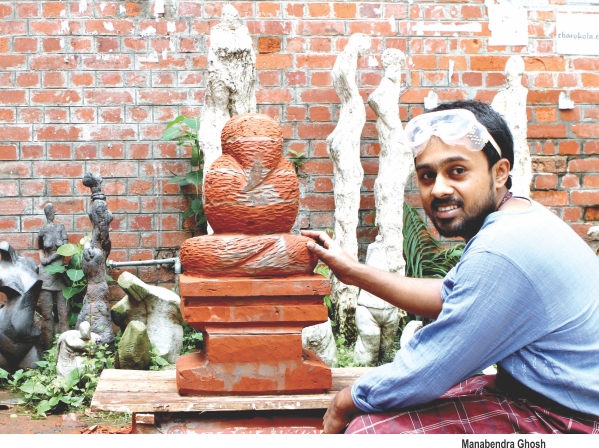| Home - Back Issues - The Team - Contact Us |
 |
| Volume 10 |Issue 36 | September 23, 2011 | |
|
|
Cover Story
An Artistic Evolution ANIKA HOSSAIN Photos: Zahedul I Khan Every child is an artist. The problem is how to remain an artist once we grow up. It is in the nature of human beings to be drawn to art, especially during the developing years. Children like to draw, play with colours and create things, often imitating what they see around them. A talented few remain interested in art, even as they grow older, and have the ability to see and create beauty in the most mundane things. They dream of nurturing and honing their talents so they can one day assume the title of an accomplished artist. Even a few decades ago, pursuing a career as an artist in Bangladesh was not for everyone. Art was not as much in demand unless it was created by a famous, often times, deceased artist and even then, very few people could appreciate and purchase these. Being a full time artist meant you had to be wealthy enough to support yourself while you pursued your interest. Many an aspiring artist had to renounce their dreams to become doctors, engineers and businessmen, and blend in with the ordinary and lead what may have seemed to them colourless lives. An artist cannot fail; it is a success to be one.
As time passed and the economy grew, things took a turn for the better. As products developed, so did the need to market them. The more desirable the product appeared to be, the higher the demand, and who better to turn something dull and unattractive into something striking and appealing, than an artist? “Artists have an aesthetic sense, a sense of composition and most importantly, they have great taste, which is why nowadays, they need artists in every industry,” says Rokeya Sultana, a reputed artist and professor at the Fine Arts Institute of Dhaka better known as Charukala. Rokeya Sultana is a born artist. Although, a winner of many awards and accolades for her paintings and prints, she chooses to maintain two careers. Sultana studied art and decided to take it up as a career even when times were difficult. “I started studying at the Government Art College in Dhaka in 1975,” she relates, “I completed my education in art at Shantiniketan and joined Charukala as an art professor in 1987.”
Given a choice, Sultana would have made painting and print making her only occupation, but in her time, this was not financially feasible. “Art supplies were far more expensive and hard to come by back then,” she remembers, “Freelance work was also difficult to find. I chose to teach art so I could continue to pay for my materials. Being a part of an institution such has Charukala also gave me the opportunity to do some research and gain more knowledge in my area of interest. My work hours were flexible enough to give me time to develop my skills and come up with my signature style.”
Some artists chose to concentrate on their art alone and instead of applying for a full time job, they chose to create art for a price, but Sultana wasn't one of them. “I needed my freedom to work on pieces that interested me, which is why I chose not to take on commissioned work,” she says. “I do believe that even today, if someone wants to pursue the career of an artist, they do need another job to sustain themselves. Fortunately for artists today, they are in demand everywhere. Many famous film makers such as Satyajit Ray had an educational background in art. Teli Samad, the famous comedian in our film industry was also a student of Charukala,” says Sultana, “Hospitals and banks where you would think they wouldn't need any creative personnel are now hiring media directors to promote themselves. Even our bathroom tiles are being designed by artists if you come to think about it. Art has become a very competitive field, perhaps even more so than engineering and medical science. The opportunities are endless,” she smiles. The Holy Grail is to spend less time making the picture than it takes people to look at it. Many artists today are benefitting from these endless opportunities by taking on professions related to art, but separate from their primary area of interest in order to support themselves and cultivate their talents. Md Raqib Hasan Apu is one such artist. Apu studied sculpting in Charukala and has always been fascinated by the human figure. It was this understanding of human form that made him the successful animator he is today. “Sculptures are always 3 dimensional, and creating the human form this way gave me an understanding of 3D animation.” After Apu completed his graduation from Charukala and was in search of a befitting occupation, he came upon an advertisement in a newspaper for an animation artist for an organisation called Green Field Toons, which is a branch of The Decode Limited. “I became a story designer and was in charge of their concept, layout and story board,” shares Apu, “It was at this organisation that I expanded my knowledge of animation.” As his knowledge increased, his interest in this form of art was peaked and he went on to establish his own organisation, naming it Pokee Creative House, where the artists employed, took on jobs related to animation from different companies.
Do not go where the path may lead, go instead where there is no path and leave a trail. There are some artists, who have inherent talents but are unable to cultivate them in a formal institution for various reasons. Syed Rashad Imam Tanmoy is one such artist. Tanmoy loved cartoons as a child more than anything else and was an avid reader of Unmad, one of the leading cartoon magazines in the country. “I learned painting during my school days in a school in Azimpur, but my passion was drawing cartoons,” says Tanmoy, “Every year during the annual Boi Mela, I would stand in front of the Unmad stall and try to gather enough courage to approach them to show them some of my work,” he shares. Unfortunately for Tanmoy, his parents had a different life planned out for him, and he was sent to the London Metropolitan to study Computer Science. “The day after I graduated though, I decided that Computer Science was not my cup of tea and I told my parents I wanted to become a cartoonist. My father almost had a heart attack!” But Tanmoy stood his ground, and after two years of waiting outside, he finally worked up the nerve to walk into that Unmad stall and show them his work. He was hired instantly. Alongside Unmad, Tanmoy also worked in several newspapers as a cartoonist. “I think I made a good decision by pursuing my interest. The average pay for a newspaper cartoonist ranges from 20 to 40 thousand Takas. I couldn't be happier with my choice of career. In my parents' time, becoming a cartoonist may have been unthinkable, but as they say, times have definitely changed.” Tanmoy now holds the position of assistant editor at the Unmad magazine. Creative without strategy is called 'art'. Creative with strategy is called 'advertising'.
Another gifted artist with no formal education is Towfik Elahi, who discovered that he could create a career from his artistic talents, after he enrolled into university. “I had many friends in Charukala,” says Elahi, “I had started off my college career thinking I would study engineering and become an inventor some day, but the more I visited my friends at the Art department, the more their subject intrigued me. I continued to go there for ten straight years and learned what I could manage from them.” Like many others, Elahi had taken interest in art as a child and had tried his hand in drawing and painting, but it was designing that truly beckoned to him. When a friend of his at Charukala informed him of a position of a designer advertised on their notice board, he decided to apply for it.
After this stint was over, Elahi worked freelance for a number of years, increasing his knowledge and developing his skills in designing. He then received an opportunity to work at a leading English daily, as a designer and photographer. “I was soon put in charge of the entire layout of the paper and later promoted to the job of graphics editor. The make-up system I created there is still used today,” says Elahi. After eight years at this organisation, Elahi started freelancing again, this time designing book covers. He then joined a well-known advertising agency known as Asiatic Marketing Communication Ltd where he worked as the senior art director for a few years. “I am freelancing nowadays and I still love my work,” says Elahi. “There are so many career opportunities these days for those who have studied art. They can work as staff artists at newspapers, computer graphics artists, interior designers, fashion designers, car designers- all of whom are very highly paid mind you. There are also those who go into filmmaking and other careers with the media. The doors are wide open for them in almost any industry.” There's no retirement for an artist, it's your way of living so there's no end to it. Electronic media has always required an artistic eye for presentation, opening up yet another window of opportunity for our artistic community. Sadek Ahmed had completed his education in art at Charukala, specialising in printmaking. After he graduated, he remained at this institution as a part time teacher. “I had an interest in design even in those days, so I took a job with ETV as a graphics designer,” says Ahmed. “I later joined ATN and am now the Deputy Chief of Graphics there.”
According to Ahmed, Charukala receives about five thousand applications every year now. “In my student days there weren't even half as many applicants. People have begun to realise that art has a wonderful quality about it-- it evolves. If I draw well, I will also be a good composer or a designer. That is why there is an increasing demand for creative people everywhere,” he says. In Ahmed's opinion, the students of Charukala are certainly going places. “As for myself, I must say that I have not given up my original passion of printing and painting. In fact, I organise exhibitions where sometimes my own work is displayed and participate in workshops to keep improving myself. You see, I do designs for the money, but I create art for myself.” It's not what you look at that matters, it's what you see. One area where artists have truly done wonders is the film industry. “Film making and art are a brilliant match when they are combined in the right way,” says independent film maker Ashfaque Nipun. “Artists have a unique way of seeing things and they bring in aesthetic aspects into every scene, whether it's the lighting, the colours, space or props, they have their own artistic flavour to add in order to make a film visually pleasing. Many great artists are also great filmmakers, like Satyajit Ray. Some contemporary filmmakers worth mentioning are Animesh Aich and Mejbaur Rahman Shumon, and they have both graduated from Charukala.” According to Nipun, many telecommunications companies and multinational corporations are developing their own communications and creative departments, and hiring artists to promote their product as well as their corporate image. A design isn't finished until somebody is using it. A visual impact also goes a long way in the event management business. Organising any event be it a concert, a wedding or a corporate party, requires good taste and a distinctive artistic vision. For this reason, Prince Asker, who is currently working in the Event and Creative department at Carnival says that a primary aspect of his work requires him to be artistic. “My role in the company is flexible and respects expression of my creativity in my own way,” says Asker. In addition to this, I am actively involved in organising events that include both pre and post responsibilities along with graphic designing and visual engineering.” According to Asker, having a background in fine arts can help enhance one's career in this industry. “Event Management requires more of street smartness along with prompt decision making that can only be learned through practical experiences in a business environment,” says Asker. “Creativity is a bonus that can enhance one's performance further in this sector. So, to be an event manager, you should not only be capable of drawing but also know how to sell your drawn art. But above all, self confidence is the key to success,” he adds. Design creates culture. Culture shapes values. Values determine the future. In order to sell their product, an artist must also be adept in his/her business skills. One such artist, known as Ishrat Jahan has managed this quite successfully. “I never thought of pursuing art as a career,” says Jahan, “I studied it purely out of interest and passion. I loved to paint and draw as a child and at Charukala, this is the area of art I chose to study.” During her student years, Jahan was interested in experimenting with colours in order to create new ones. “I found myself looking at the palette as much as I looked at the canvas, and I found both equally fascinating,” Jahan recalls. “It was the beautiful combination of colours that got me thinking about how they would look on fabrics. When I shopped, I liked looking at clothes carefully and mixing and matching different colours to come up with my own fashion. I never thought specifically about fashion designing,” she shares. Then on several occasions, Jahan had the opportunity to observe friends of hers painting on sarees, which she found intriguing. “That was what inspired me to turn clothes into my canvases and composition became my hobby,” says Jahan. In 2001, Jahan started working at Nipun fashion house, painting fabrics, which were fashioned into clothing. “I liked my experience there because I was doing something different. My work was appreciated and the artist in me was happy.” However, no artist likes limitations and boundaries and soon Jahan became tired of working under others. In 2005 Jahan, her husband and their friend started a clothing business of their own and they named it Deshal. Even though it is fairly new, Deshal has become a household name in Dhaka. The store is known for its ethnic fashions, local materials and most importantly, tasteful colour combinations. The Deshal team creates a fusion between Bengali fashions and culture and western wear and produces a unique look that makes them popular. I saw the angel in the marble and carved until I set him free. While the need to find an art related career increases, there remain some, who choose not to be digressed from their natural abilities by joining a full time job, which will eat into their creative time. Sculptor Manabendra Ghosh is one such individual. “When I decided to enroll into Charukala, my family and I worried about the future,” says Ghosh “You never know whether you will truly be a successful artist until you become one. My father had taught me how to draw, but I was always interested in sculpting.” Ghosh started working as a professional artist from the very beginning of his life as a student. “I needed the practice and the money to buy art supplies,” he explains, “I got several requests to make sculptures in return for a commission and so I got started from my first year at Charukala.” Ghosh started making props for local theatres and also partook in National level exhibitions to promote himself. As he gained recognition, Ghosh came by several stints, which required him to create large-scale sculptures in prominent locations. A few of these include, a tiger at the Chittagong Tiger Crossing, a life size sculpture of a traditional palki (mode of transportation for women), complete with its bearers, which is located in Kushtia, and many more. “I use hay, glass fibre, cement, metal and stone as medium for my sculptures,” says Ghosh. “These materials are often expensive and I spent about Tk 40,000 on exam materials alone.” At one point, to cover his expenses, Ghosh took on a position at a prominent newspaper as a cartoonist and designer. However, he found that this job kept him away from his art for long hours. “I finally decided that I can't ignore my art,” he says, “So I went back to doing freelance work to cover my costs. My art is too important for me to neglect.” Sometimes I've believed as many as six impossible things before breakfast. It's fascinating how just a short while ago, the general opinion on art as a career seemed to be “doomed to failure,” but in a few short years, flexible and open to evolution, art has seeped its way into almost every nook and cranny of the contemporary world. One has innumerable professions to choose from after having studied art. You can be a bookplate artist, calligrapher, floral designer (own your own flower shop), mural artist, airbrush artist, gallery owner, pottery and handicrafts artist, glass blower, greeting cards artist, interior decorator, internet designer, jewellery designer, kitchen ware and furniture designer, label designer, artist's agent, textile designer, bank note designer, medical illustrator (diagrams and sketches), landscape architect, in fact, you can even use your artistic skills to cure mental illnesses through art therapy. Come to think of it, even this cover story has been formatted by an artist educated at Charukala. The possibilities are endless. For any aspiring artist, these are exciting times indeed – anything is possible.
Copyright (R) thedailystar.net 2011 |
||
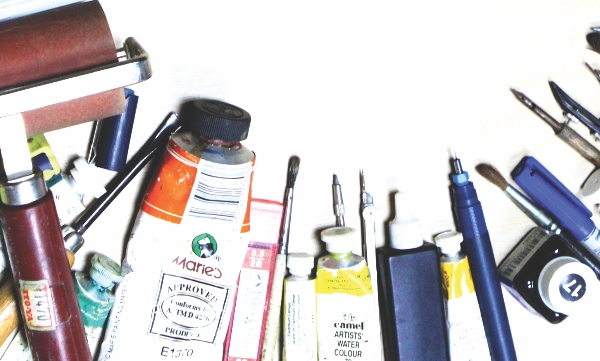
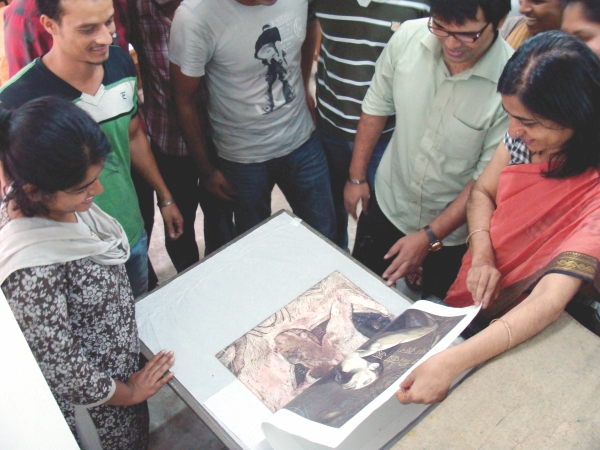
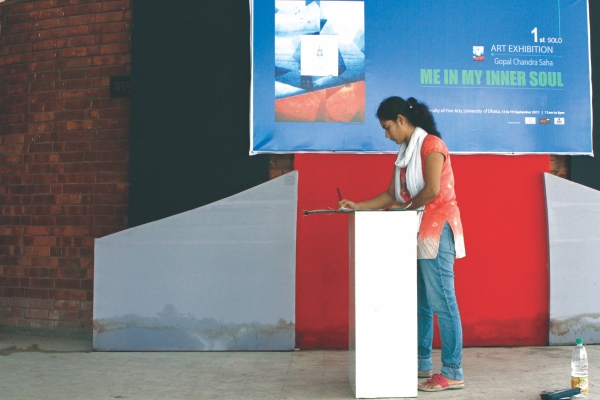
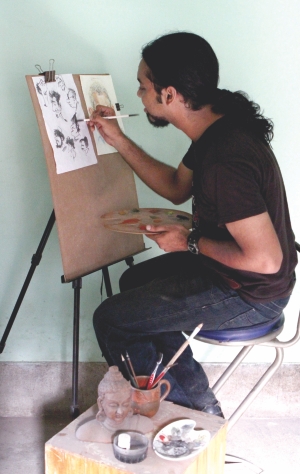
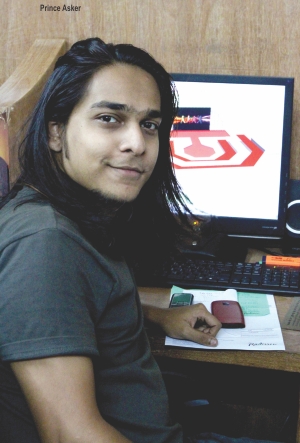 Currently, Apu works as the director of the famous cartoon produced by UNICEF known as Meena, created to raise awareness in South Asia about the importance of educating women. “There are new opportunities in the field of art everywhere. Nowadays it is easy to learn about new forms of art through books and the Internet, so those who have creativity in them can expand their knowledge easily,” says an enthusiastic Apu.
Currently, Apu works as the director of the famous cartoon produced by UNICEF known as Meena, created to raise awareness in South Asia about the importance of educating women. “There are new opportunities in the field of art everywhere. Nowadays it is easy to learn about new forms of art through books and the Internet, so those who have creativity in them can expand their knowledge easily,” says an enthusiastic Apu. 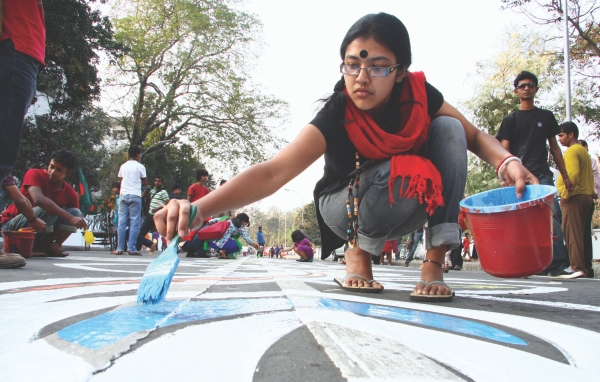
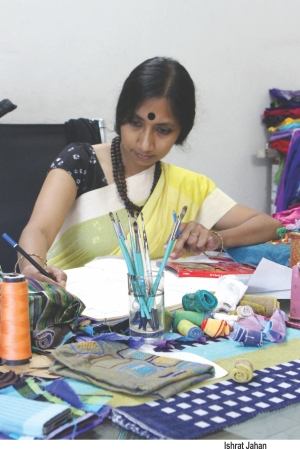 “Even though I had very little experience, they liked my ideas and decided to hire me,” shares Elahi. “This was a small advertisement firm where my primary duties involved printing jobs. I developed my basic knowledge of design and printing here and got the opportunity to design some logos etc,” says Elahi.
“Even though I had very little experience, they liked my ideas and decided to hire me,” shares Elahi. “This was a small advertisement firm where my primary duties involved printing jobs. I developed my basic knowledge of design and printing here and got the opportunity to design some logos etc,” says Elahi.